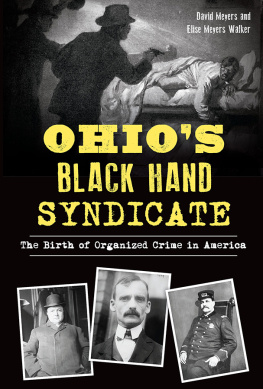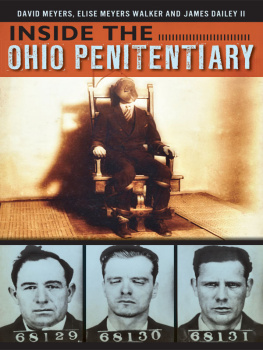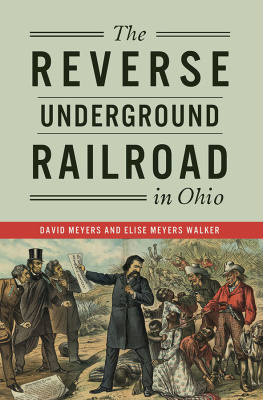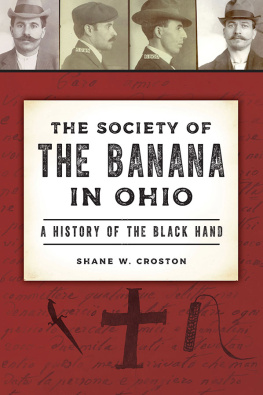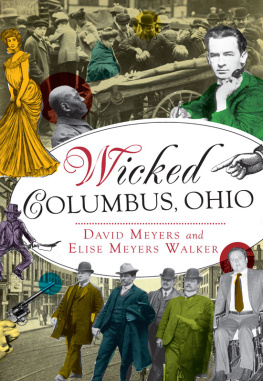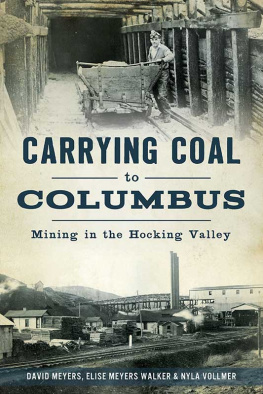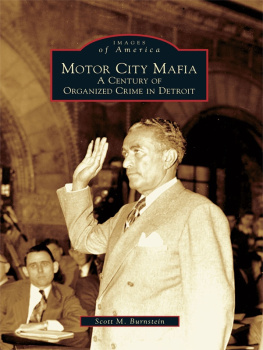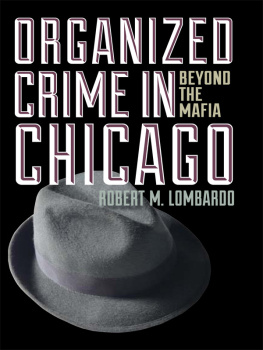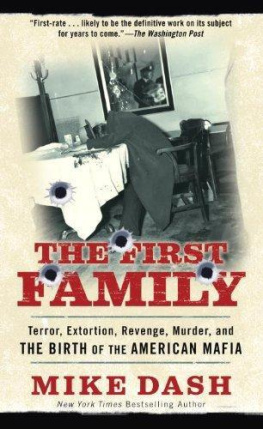
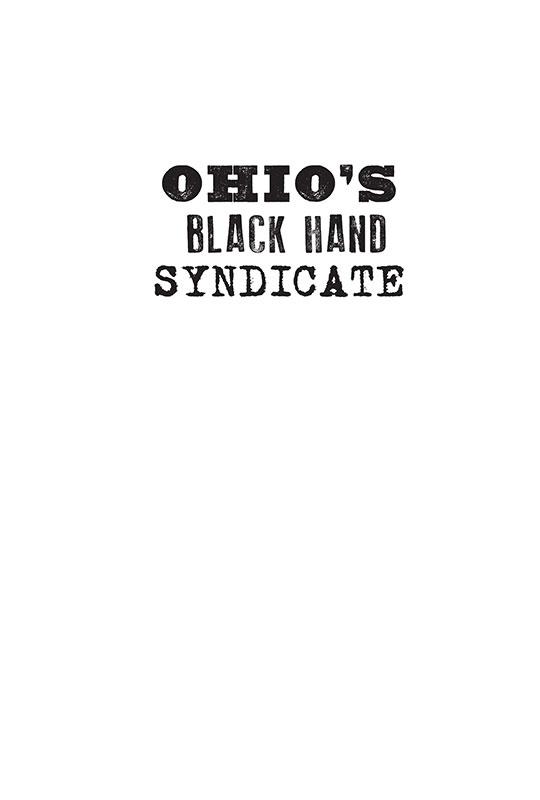

Published by The History Press
Charleston, SC
www.historypress.com
Copyright 2018 by David Meyers
All rights reserved
First published 2018
e-book edition 2020
ISBN 978.1.43967.181.8
Library of Congress Control Number: 2017963232
print edition ISBN 978.1.46713.976.2
Notice: The information in this book is true and complete to the best of our knowledge. It is offered without guarantee on the part of the authors or The History Press. The authors and The History Press disclaim all liability in connection with the use of this book.
All rights reserved. No part of this book may be reproduced or transmitted in any form whatsoever without prior written permission from the publisher except in the case of brief quotations embodied in critical articles and reviews.
In memory of my parents, Virgil and Marie Meyers.
I stand on their shoulders.
CONTENTS
ACKNOWLEDGEMENTS
Thanks to Evelyn Keener Walker for her suggestions, Tara Narcross for her advice, Randy McNutt for his encouragement and John Rodrigue for his support. Also our appreciation goes to the Library of Congress, the New York Public Library and the Columbus Metropolitan Library for the use of images from their collections.
INTRODUCTION
They tackled the wrong fish.
John Amicon
It took awhile for crime to get organized in the United States.
Despite the existence of criminal bands at least as far back as colonial days, law enforcement generally was reluctant to admit that organized crime had reached Americas shores even as the twentieth century was dawning. But it had, if only in a primitive form. It was brought over by foreigners (i.e., our ancestors) as surely as they had their languages, customs, religions, foods and diseases.
Most historians trace true organized crime back to Prohibition, bootleggers and the rise of the Capone mob in Chicago. Certainly, Al Capone, building on the foundation laid by Johnny Torrio by way of Big Jim Colosimo, constructed a criminal syndicate unlike any before it. However, it may actually have had a much humbler birth, more than a decade earlier, in the back room of a fruit store in Marion, Ohio. And the seed from which it sprouted was the Black Hand.
Although the term would not come into use until about 1898, the Black Hand, or La Mano Nera, first appeared in the United States in the 1870s and, for all intents and purposes, passed out of existence in the 1920s. A technique for extorting money through threats of violence, it was believed by many to have developed into an organized criminal conspiracya so-called Black Hand societyfirst in Italy and then in North America.
By 1878, a band of Sicilian immigrants calling themselves La Maffia was known to have been running an extortion racket in San Francisco. The San Francisco Examiner described the members as a neat little tea party of Sicilian brigands who endeavored to extort money from their countrymen by a system of blackmail, which includes attacks on character and threats to kill. This would soon come to epitomize Black Hand crime.
Early on, the terms Mafia and Black Hand were used interchangeably by law enforcement and the newspapers to describe any crimes committed by Italians. But in 1908, Gaetano DAmato, former president of the United Italian Societies, argued that the existence of a Black Hand society in Italy was a myth. He claimed it had actually originated in Spain, where it referred to well-intentioned missionaries who had hoped to redress the balance between rich and poor; but it soon drew down to it many desperadoes.
DAmato pointed out that both good and bad Italians had been allowed into the United States due to lax immigration laws. They included thousands of ex-convicts from Naples, Sicily and Calabria, who supported themselves by robbery and extortion. Although such criminals represented less than 3 or 4 percent of the nations Italian population and were not organized to any significant extent, it was these individuals who the sensational press had branded the Black Hand. Almost every dark-skinned European not speaking English, who does not wear the Turkish fez, is put down on the police records as an Italian, and thus the Italian is condemned for much of the crime committed here by persons of other nationalities.
Even the term Black Hand, DAmato claimed, was first invoked in the United States about ten years earlier by an Italian desperado who was inspired by the exploits of the Spanish. He maintained it had not been used in Italy until after it was popularized in America. Once it became associated with certain types of crimes, the newspapers ran with it, making the assumption that all such crimes were the work of one groupthe elusive Black Hand Society. This was like believing all pickpockets, panhandlers or pool hustlers were in cahoots.
Alessandro Mastro-Valerio, publisher of an Italian-language newspaper in Chicago, went so far as to charge that Carlo Barsotti, editor of a rival paper in New York, had invented the term Black Hand in an effort to avoid using the word Mafia with its Old World associations. However, many historians were of the opinion that the earliest Black Hand activities began in Sicily as early as the 1750s and then spread throughout the rest of the kingdom of Naples.
Even as Italian-language newspapers were denying its existence, the Mafia was being blamed for all manner of crimes committed by and against Italians in the United States. And there can be no denying that criminal bands were active in American cities that had colonies or settlements of immigrants from southern Italy. As immigrants from the southern regions of Italy began arriving in the 1880s, the lawbreakers among them continued their shakedown of their compatriots. By 1900, there was evidence of such blackmail efforts in the Italian American communities of many major cities, particularly New York, New Orleans and Chicago. Although the more successful immigrants were their primary targets, it was estimated that at one point nearly 90 percent of all Italians in New York had been threatened by the Black Hand.
The Black Hand brand had a certain cachet that caught the imagination of criminals and would-be criminals who freely flaunted it to suggest that they were soldiers in a larger army. If everyone who called themselves the Black Hand were part of the same villainous group, then it would have been an enormous enterprise, indeed. But they werent. From New York to New Orleans, the Black Hand was the boogeyman, attributed with every shocking and unsolved crime.
In truth, most so-called Black Handers did not exhibit a very sophisticated or wide-ranging network. Certainly, they had nothing to match the Unione Siciliana. In the early 1880s, the Unione Siciliana was formed in New York City as a fraternal and benevolent association. It helped Sicilian immigrants by selling insurance, assisting with housing, providing English language instruction, settling legal disputes and, on occasion, endeavoring to negotiate peaceful settlements in Black Hand affairs. A Chicago branch was chartered a decade later, with membership of over half a million.
In time, however, local criminal gangs and politicians began to vie for control of the Unione Siciliana, much as they did labor unions in the 1920s and 1930s. Such outwardly respectable organizations would come to provide cover for all manner of nefarious endeavors, up to and including murder (although a few historians still deny the Unione Siciliana was ever corrupted). Giovanni Schiavo, a pioneer in Italian American studies and a proud Sicilian, dedicated himself to refuting the drivel that has been written regarding the Black Hand and the Unione Siciliana.
Next page
